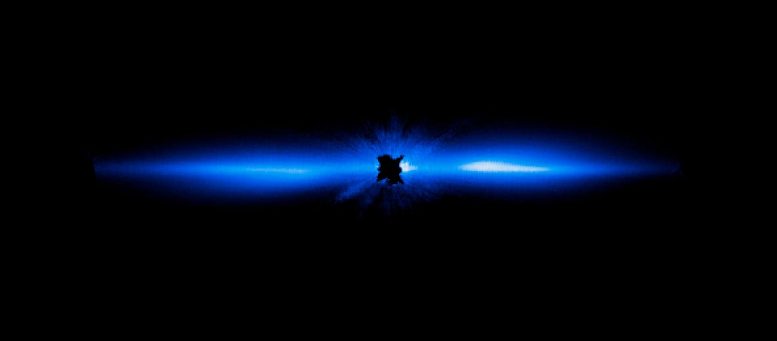
Astronomers have used the NASA/ESA Hubble Space Telescope to take the most detailed picture to date of a large, edge-on, gas-and-dust disc encircling the 20-million-year-old star Beta Pictoris. Beta Pictoris remains the only directly imaged debris disc that has a giant planet (discovered in 2009). Because the orbital period is comparatively short (estimated to be between 18 and 22 years), astronomers can see large motion in just a few years. This allows scientists to study how the Beta Pictoris disc is distorted by the presence of a massive planet embedded within the disc. This 2012 visible-light Hubble image traces the disc to within about 1050 million kilometers of the star (which is inside the radius of Saturn’s orbit about the Sun). Credit: NASA, ESA, and D. Apai and G. Schneider (University of Arizona)
What Is a Circumstellar Disc?
Circumstellar discs are discs of dust, gas, asteroids and other objects that rotate around a star. Circumstellar discs around newly formed stars are known as protoplanetary discs.
Stars form from dust and gas. After a star is formed, the remaining dust and gas is trapped in orbit, forming a rotating disc or torus around the young star, known as a circumstellar disc. The circumstellar discs around young stars are known as protoplanetary discs, because they provide the reservoir of materials from which new planets may form. Protoplanetary discs are thought to be made up of 99% gas and 1% dust. As planets form and stellar systems evolve, their circumstellar discs also evolve. Circumstellar discs around older stars may include dust, gas, asteroids, comets, planets, and other debris. Our Sun has several circumstellar discs: the asteroid belt, the Kuiper belt, and the Oort cloud.
Circumstellar discs are discs of dust, gas, asteroids and other objects that rotate around a star. Circumstellar discs around newly formed stars are known as protoplanetary discs. Credit: ESA/Hubble, NASA, ESA, and D. Apai and G. Schneider (University of Arizona)
Hubble’s instruments have provided detailed views of circumstellar discs, allowing astronomers to study these regions and the process of planet formation. For example, Hubble’s observations of the star HD 141569A gave astronomers their clearest view yet of the dust disc around the 5-million-year-old star that lies 320 light-years away. When studying the disc of TW Hydrae, a visible gap in the disc was apparent. This was best explained as being due to the effects of a growing, unseen planet that is gravitationally sweeping up material and carving out a lane in the disc, like a snow plow. As is done for the study of many circumstellar discs, Hubble made use of Hubble’s NICMOS instrument to block out TW Hydrae’s bright light so that the disc’s structure could be seen. The telescope also observed the discs of HD 141943 and HD 191089, which were uncovered in archival Hubble images.

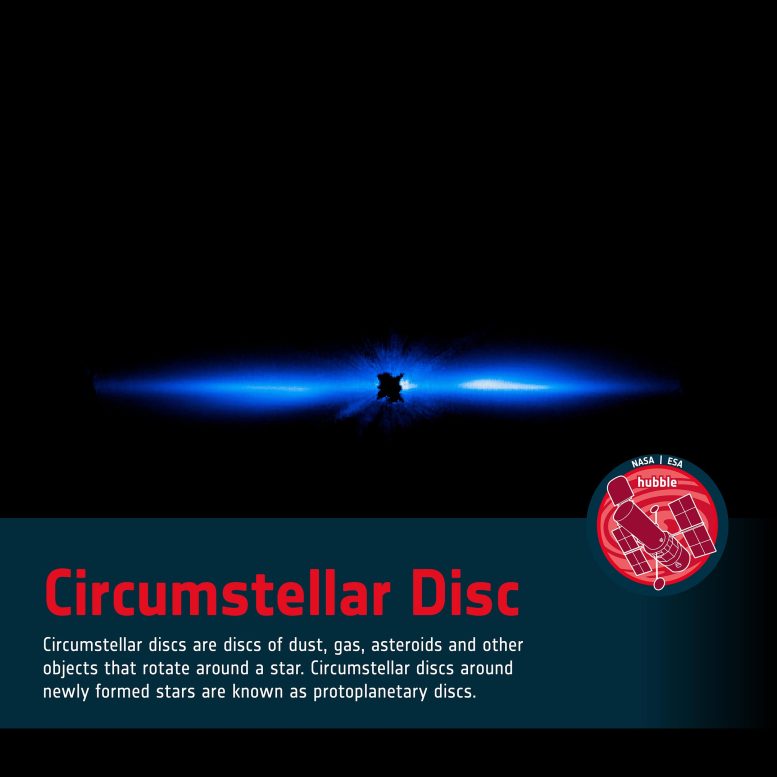
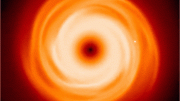
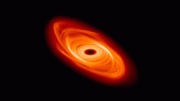
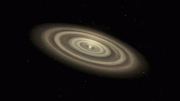
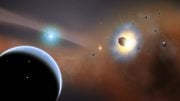
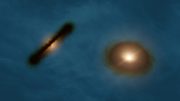
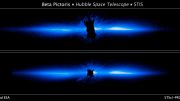
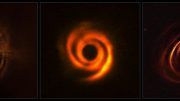
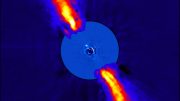
Be the first to comment on "Astronomy & Astrophysics 101: Circumstellar Disc"